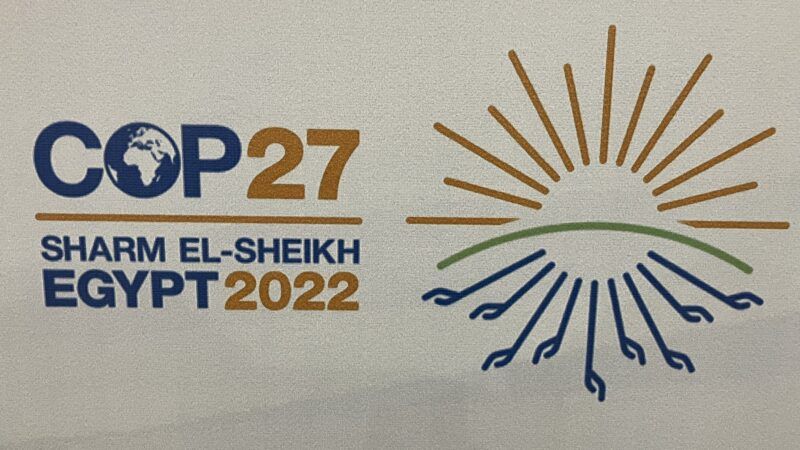A New Climate Change Loss and Damage Fund Established at U.N. Climate Change Conference
Poor countries expecting a climate change reparations bonanza will likely be disappointed.

The 27th United Nations (U.N.) Climate Change Conference (COP27) was supposed to end on Friday, but it ran overtime this past weekend closing at dawn on Sunday. The delay was largely caused by a huge fight among negotiators over whether to set up a new fund financed by rich countries to pay poor countries what amounts to climate change reparations. The new fund would pay poor countries for loss and damage stemming from man-made climate change.
In the 2015 Paris Agreement on climate change, Article 8 recognizes "the importance of averting, minimizing and addressing loss and damage associated with the adverse effects of climate change including extreme weather events and slow onset events." In the climate change context, the term "loss and damage" describes the manifestation of climate change impacts that are not or cannot be avoided by adaptation (e.g., building infrastructure) and mitigation efforts (e.g., reducing greenhouse emissions). Extreme weather events include heat waves and flooding, while slow onset events encompass sea level rise and ocean acidification.
Despite the fact that a side agreement to the Paris Agreement states that Article 8 "does not involve or provide a basis for any liability or compensation," rich countries have long worried that creating a new U.N. bureaucracy dedicated to loss and damage financing would do exactly that.
Nevertheless, the rich countries relented this weekend, and COP27 decided to "establish new funding arrangements for assisting developing countries, especially those that are particularly vulnerable to the adverse effects of climate change." The new loss and damage funding arrangements will focus on "mobilizing new and additional resources."
So what new and additional financial resources may be mobilized? The decision includes "identifying and expanding sources of funding." Frans Timmermans, the vice-president of the European Commission, earlier argued at COP27, "We need to realize that we live in 2022 and not in 1992. And we cannot have future funding based on ideas and economic realities of 30 years ago. We need to take into account economic situations of countries now."
Timmermans was pointing out that under the 1992 United Nations Framework Convention on Climate Change, only specific (Annex I) developed countries had responsibilities to address the problem of climate change by cutting their greenhouse gas emissions. Oil-rich countries like Saudi Arabia and Kuwait were excluded along with China. Keep in mind that China's gross domestic product in real dollars was just over $1.2 trillion in 1992 and is now nearly $16 trillion. Its annual greenhouse gas emissions were 3.5 gigatons in 1992 and are now 12.7 gigatons. In comparison, U.S. greenhouse gas emissions were 4.8 gigatons in 1992 and are now around 4.8 gigatons.
China, nevertheless, insists on maintaining the convenient fiction that it is still a developing country. "We strongly support the concerns from developing countries, especially the most vulnerable countries, for addressing loss and damage because China is also a developing country and we also suffered a lot from extreme weather events," asserted China's chief climate change negotiator Xie Zhenhua at the conference. "It is not the obligation of China to provide financial support under the UNFCCC." However, the European Union and the United States retort that if they are going to be on the hook for loss and damage compensation to poor countries, so should China.
Back in September, U.N. Secretary-General António Guterres offered another idea for expanding the sources of loss and damage funding. He proposed that developed countries impose a windfall profits tax on oil and natural gas companies. "Those funds should be re-directed in two ways: to countries suffering loss and damage caused by the climate crisis, and to people struggling with rising food and energy prices," he said.
With respect to the new loss and damage fund, the history of the Green Climate Fund (GCF) may be instructive. COP16 in Cancun in 2010 established the GCF to be financed by rich countries to the tune of $100 billion with the goal help developing countries to mitigate and adapt to climate change. So far, the GCF has raised just over $8.3 billion.
The new loss and damage fund is supposed to be organized and ready for approval by COP28, which will be held in the United Arab Emirates in 2023.


Show Comments (49)